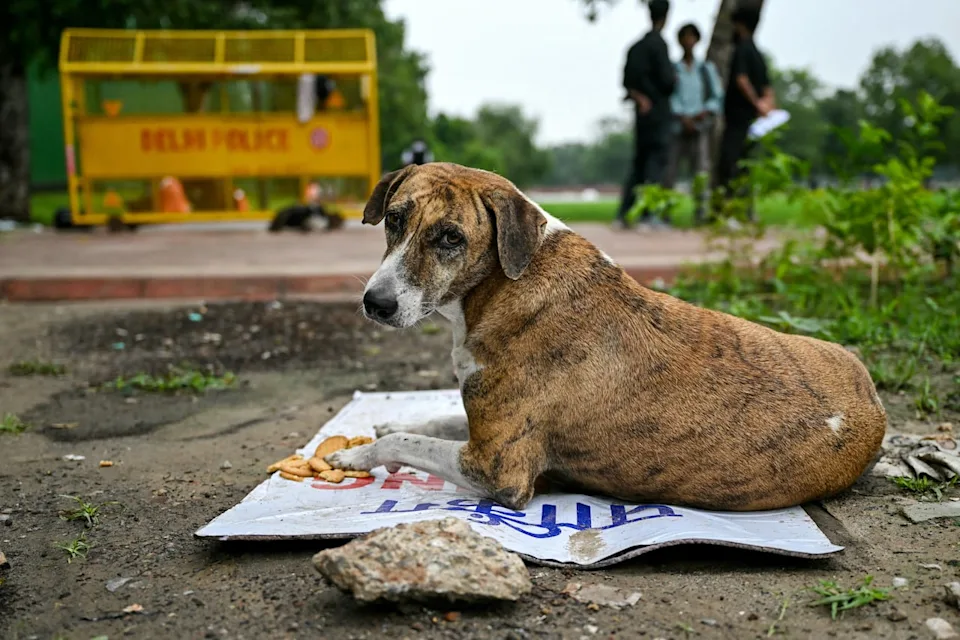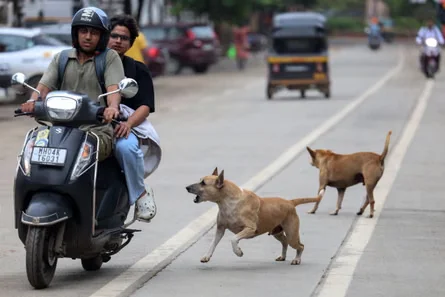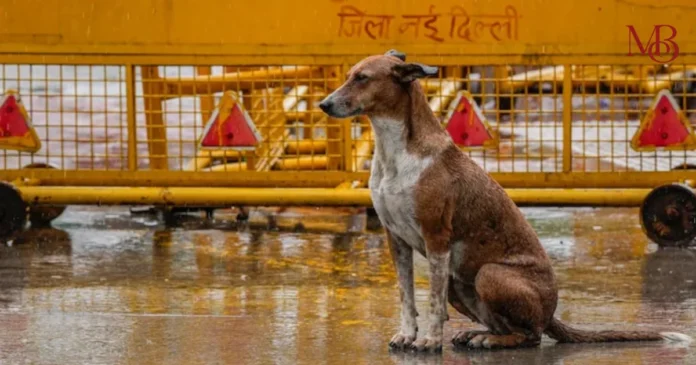Delhi has faced many crises in recent years, including pollution, traffic chaos, floods, and even smog that chokes the city every winter. But in August 2025, another issue unexpectedly made national headlines: the Delhi stray dog crisis.
For some, it was a matter of fear, rising cases of dog bites, reports of rabies, and children being attacked in their own neighbourhoods. For others, it was about compassion, anxiety that lakhs of stray dogs would be picked up, caged, and left to suffer.

When the Supreme Court of India first ordered the removal of all stray dogs from Delhi-NCR streets, both sides erupted. On one hand, many residents cheered, hoping this would make their neighborhoods safer. On the other hand, animal rights groups protested, arguing that such a mass removal was inhumane, impractical, and against existing laws.
The courtroom became a battlefield of ideas: safety vs compassion, law vs ground reality, fear vs empathy. And on 22 August 2025, the Court delivered its final verdict, a ruling that could change how India deals with stray dogs, not just in Delhi, but nationwide.
The Background: The Delhi Stray Dog Crisis. Why Did This Happen?
Stray dogs have long been a part of India’s urban and rural landscapes. Estimates suggest that India has more than 70 million stray dogs, making it one of the highest populations in the world. Delhi alone has several lakhs roaming its streets.
With such numbers, conflict is inevitable. Newspapers have regularly reported the Delhi stray dog crisis:
- Children mauled by groups of stray dogs.
- Senior citizens are attacked while taking morning walks.
- Rising rabies cases in hospitals.
Public anger grew, leading to petitions being filed in the Supreme Court demanding a solution. In response, on August 11, 2025, the Court issued a dramatic order: remove all stray dogs from the streets of Delhi and NCR, relocate them to shelters, and free the city of this crisis.
At first glance, it sounded like a victory for safety. But reality soon caught up on the Delhi stray dog crisis.
Delhi Stray Dog Crisis: Why the Removal Order Backfired
The August 11 order faced almost immediate backlash. Animal welfare organisations, veterinarians, and NGOs pointed out that:
- Logistical Impossibility: Delhi does not have the infrastructure or shelters to house lakhs of dogs.
- Violation of ABC Rules: India’s Animal Birth Control (Dogs) Rules, 2001 specifically state that stray dogs should not be relocated, but sterilised and returned.
- Risk of More Aggression: Removing dogs from one area creates a “vacuum effect.” New dogs move in, leading to more conflicts.
- Cruelty Concerns: Many feared that dogs would be left in overcrowded shelters with poor facilities, leading to suffering and death.
Celebrities, activists, and even international organisations joined the protest. Social media campaigns like #JusticeForStrays and #HumaneSolutions trended for days.
Faced with this storm of criticism, the Supreme Court reconsidered its stand.

The Final Verdict on Delhi Stray Dog Crisis: What the Supreme Court Ordered
On 22 August 2025, the Supreme Court revised its earlier order and announced a balanced, long-term approach. Here’s what the ruling said:
1. Sterilise, Vaccinate, Release
Stray dogs will not be permanently removed. Instead, they will be:
- Captured by civic authorities,
- Sterilised under veterinary supervision,
- Vaccinated against rabies,
- And finally released back into the same locality where they were found.
This follows the ABC Rules, which are based on scientific studies showing sterilisation is the only sustainable way to reduce stray populations.
2. Aggressive and Rabid Dogs Will Be Quarantined
The Court recognised public safety concerns. It ruled that dogs showing:
- Signs of aggression, or
- Symptoms of rabies
will be kept in isolation or quarantine and will not be released back on the streets.
3. Feeding Points to Be Established
To avoid conflicts between dog feeders and residents, the Court ordered:
- Designated feeding zones in each locality, managed by civic bodies.
- Feeding stray dogs outside these zones, such as at gates, streets, or random spots, will be prohibited.
This ensures dogs are cared for, while also keeping public spaces orderly.
4. Nationwide Expansion
The Court emphasised that this is not just Delhi’s problem. It extended the scope of the case to all states and union territories, asking them to adopt a uniform policy under the ABC Rules.
5. Balancing Rights and Responsibilities
The judgment was clear: citizens deserve safety, but animals deserve dignity too. The verdict attempts to balance the rights of both humans and animals.
Why This Matters: Beyond Delhi
This verdict is more than just a local ruling. It sets a national precedent.
For citizens, it offers reassurance that authorities are addressing safety concerns without resorting to cruelty. For activists, it confirms that the legal system still upholds India’s long-standing commitment to animal welfare. For civic bodies, it provides a clear framework to act.
It also underscores an important truth: there are no shortcuts. Mass removal or culling might look like a quick fix, but they don’t solve the root problem. Sterilisation, though slower, is the only proven, sustainable solution.
The Challenges Ahead in Delhi Stray Dog Crisis
While the verdict is clear, its implementation will decide its success. Some of the challenges include:
- Infrastructure: Delhi needs more sterilisation centres, trained veterinarians, and holding facilities.
- Scale of the Task: Sterilising lakhs of dogs is a massive exercise requiring funds, manpower, and coordination.
- Monitoring Aggressive Dogs: Who decides what counts as “aggressive”? Clear guidelines will be needed.
- Community Cooperation: Feeding zones must be respected by both feeders and residents, which may lead to disputes.
- Funding: Civic bodies are already stretched. Expanding sterilisation drives will require substantial budget allocations.
A Human Story: The People Behind the Debate
To truly understand this issue, it helps to hear the voices on the ground.
For Residents:
Renu Sharma, a mother from East Delhi, says she has stopped letting her 6-year-old play in the park after a child in her neighbourhood was bitten. “We live in fear every day,” she says. For her, the Court’s verdict is a relief, but she hopes aggressive dogs will truly be kept away.
For Animal Lovers:
On the other side, Amit Tiwari, who has been feeding strays in his colony for over a decade, says, “They are like family to us. Removing them would have been cruel. The verdict gives us hope, but feeding zones need to be practical.”
These voices show the complex emotions tied to the issue, fear, compassion, and a search for balance.

Lessons for India
The Delhi stray dog crisis has highlighted some important lessons:
- Public Awareness is Key: People must be educated on how to behave around dogs, prevent bites, and report rabies cases quickly.
- Collaboration Works: Solutions require cooperation between civic bodies, residents, and NGOs.
- Science Over Panic: Quick-fix solutions rarely work; long-term scientific methods like sterilisation are essential.
- Law Matters: The ABC Rules, already in place, were reinforced, proving that the legal system respects humane practices.
Also Read: Delhi Stray Dogs Crisis: Supreme Court Order That Shook the Capital
A Turning Point for India on Delhi Stray Dog Crisis
The Supreme Court’s verdict is not about “lifting” the crisis but about reshaping the response. Delhi will not see its streets suddenly emptied of dogs. Instead, it will witness a more systematic, humane approach, sterilise, vaccinate, and release.
It’s a decision that acknowledges reality: dogs are part of India’s urban life, and coexistence is the only sustainable path forward. By striking a balance between public safety and animal welfare, the Court has set the tone for the future of stray dog management across India.
The coming months will show whether authorities rise to the challenge. If done right, Delhi could become a model city for humane and effective stray dog management.
FAQs on Delhi’s Stray Dog Crisis
Q1. Will stray be removed from Delhi streets?
No. They will be sterilised, vaccinated, and released back into their local areas.
Q2. What happens to aggressive or rabid dogs?
They will be quarantined or isolated as per veterinary protocols, not released back.
Q3. Can people feed stray dogs anywhere in Delhi?
No. Feeding will only be allowed in designated feeding points created by civic bodies.
Q4. Does this verdict apply only to Delhi?
No. The Supreme Court has directed all states and UTs to adopt a uniform stray dog management policy under the ABC Rules.


